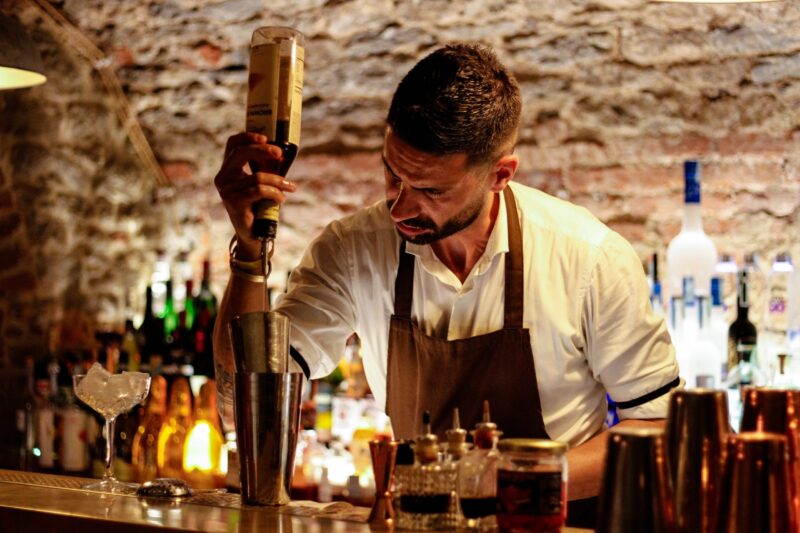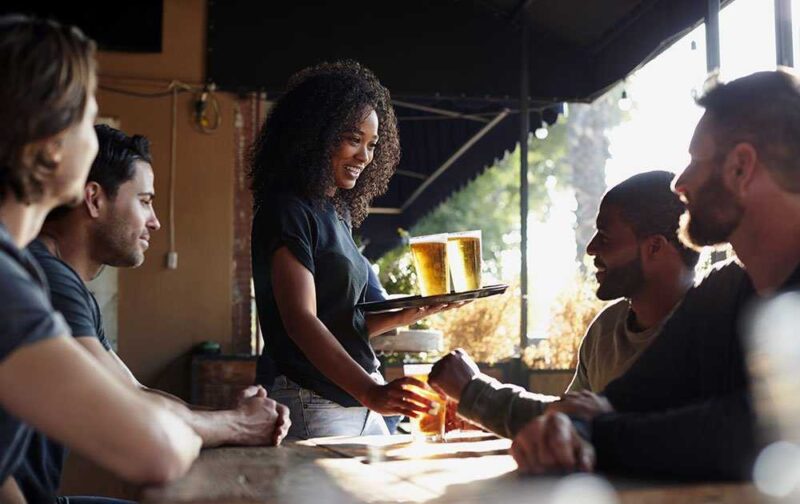Responsible beverage service (RBS) training has become increasingly important over the years. This type of training ensures that alcohol is served responsibly and legally. So how long does this type of training take? If you’re curious, we’ll break it down in this blog post and give you all the information you need to know!
Benefits of RBS Training

It is an important part of the food and beverage industry. It is especially important for those who serve alcoholic beverages, since overconsumption can result in legal ramifications as well as potential harm to patrons. RBS training not only ensures that customers are served responsibly, but also helps servers gain knowledge in areas such as identification of intoxicated patrons, legal responsibilities, underage drinking regulations and the principles of responsible commerce pertaining to alcohol.
By taking it, servers will learn how to prevent serving or selling alcoholic beverages to individuals under the minimum age of drinking. The concept of “no identification- no alcohol” will be emphasized throughout the program so that all personnel involved with alcohol sales understand their company/establishment policies and laws associated with this topic. Additionally, staff will be made aware of signs associated with intoxication and strategies for cutting people off from further service when needed.
In most cases, RBS training takes about 8 hours completed over 1–2 days in a formal setting such as a classroom or online instruction program. At the conclusion of this program, a partner certificate or similar form of fulfilment documenting completion may be awarded.
Duration of RBS Training

Responsible Beverage Service (RBS) training is typically a short course intended to teach servers, bartenders, and other employees about their legal responsibilities when serving alcoholic beverages. The length of RBS training varies from state-to-state and even from location to location. Generally speaking, it can last anywhere from a few hours to an entire day.
More than just the length of the training, though, it’s important to consider what topics will be covered during the duration of the class. At minimum, RBS courses should cover common safety precautions such as how-to ID customers who may be underage and how to spot guests who’ve had too much to drink. Depending on the state legislature, however, additional topics involving alcohol laws might be discussed as well – such as prohibition-era laws or changes in legal drinking ages over time.
It’s also important that course instructors use methods that help keep participants engaged throughout the duration of their training. This could mean utilizing PowerPoint presentations or videos, mixing up shorter activities with longer lectures and discussions or breaking participants into small groups for activities or questions/answers sessions. In addition to understanding responsible serving basics like checking IDs for age verification and monitoring drinks consumption, course attendees should also feel confident that they know what might constitute excessive drinking behavior in order to prevent any embarrassing situations at their place of work due to service negligence.
Prerequisites for RBS Training
There are a few prerequisites for Responsible Beverage Service (RBS) training. Individuals must be at least 18 years of age and demonstrate basic knowledge about the alcohol industry and its related laws and regulations. Additionally, individuals need to have a working familiarity of their workplace’s product lines and hours of operation, as part of the training exercises involve discussion on customer service policies.
The RBS training itself typically lasts approximately four hours and is conducted by an official instructor working in compliance with established health, safety, environmental protection laws. The instructor will also be well-versed in state and local alcoholic beverage licenses as well as in general sales practices. During this time, participants will engage in classroom instructions, interactive activities aimed at developing strategies for:
- Recognizing signs of intoxication
- Planning ahead for problem prevention strategies
- Recognizing the legal age to drink alcohol-containing beverages
- Identifying alternative products without alcohol content
Those who have completed the course will understand their role as server/seller of alcoholic beverages as well as the business’ responsibility in avoiding legal repercussions due to over-service or under-age drinking situations.
How to Prepare for RBS Training

It is important to be adequately prepared before attending this training course. Doing so can help individuals understand the material better and increase their overall knowledge level of responsible alcohol consumption. The following tips should be followed to ensure that you receive the most benefit from your RBS training experience.
- Find out the length of the RBS training course and review the agenda. Most courses last approximately four hours, however it is important to double-check with your provider to ensure that classes meet any local or state requirements.
- Ask as many questions as you have in advance of attending class and research basic information about alcohol safety, such as proper serving techniques and states’ minimum drinking age laws, ahead of time.
- Get a good night’s rest, arrive at least a few minutes early for class, and bring snacks or other materials needed to stay focused throughout.
- Be an active participant by asking questions, participating in discussion and taking notes in order to make sure that all topics are covered thoroughly and accurately during the program.
- Be respectful of other students’ opinions while discussing sensitive topics such as underage drinking laws or how specific scenarios should be managed when serving guests alcoholic beverages.
Conclusion

Responsible Beverage Service training is crucial for ensuring that staff are prepared for their roles and stay up to date with any changes in the law or industry regulations. There are several different courses and programs available, from one-time classes to extended training, so it’s important to understand the various features of each program.
Regardless of the training program chosen, employers should strive for knowing their staff are educated on RBS best practices. Companies should also keep track of any certifications held by employees and monitor any changes in legislation or regulation. By viewing RBS training as an investment in the success of their business, employers will be able to protect their business while ensuring their staff is adequately trained on serving responsibly.

